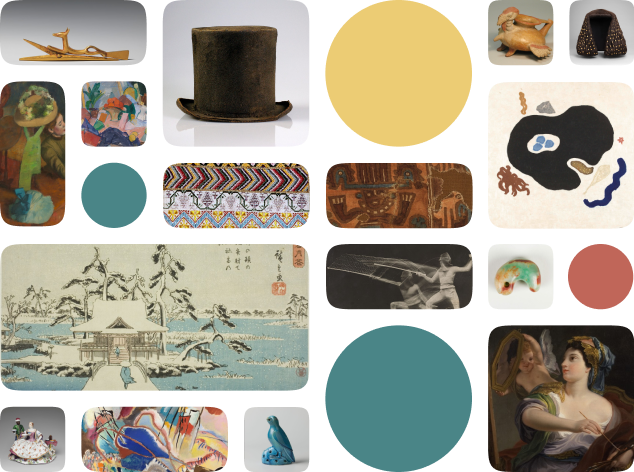Head of a Female Figurine
Creator Name
Cultural Context
Date
Source
About the work
Archaeologists found numerous figurine fragments, dating from the 4th to 7th century CE, in Coptic Christian homes in Kharga Oasis. The homes contained niches on the walls, possibly for idols and offerings like this one.
Copts are an ancient Egyptian ethnoreligious community who were at one time a minority, however they currently exist as the largest Christian community in the Middle East. Originally, pre-Islamic Egyptians who spoke the Coptic language were identified as "qibṭ." After splits in favor of Islam or Christian faiths, the Arabic word was westernized to Copt, denoting Egyptian Christians.
This head which belongs to the body of a female figure has a hole at its top indicating it may have at one time been hung or worn as an amulet.
Copts are an ancient Egyptian ethnoreligious community who were at one time a minority, however they currently exist as the largest Christian community in the Middle East. Originally, pre-Islamic Egyptians who spoke the Coptic language were identified as "qibṭ." After splits in favor of Islam or Christian faiths, the Arabic word was westernized to Copt, denoting Egyptian Christians.
This head which belongs to the body of a female figure has a hole at its top indicating it may have at one time been hung or worn as an amulet.
Metropolitan Museum of Art Object Description
Statuette
Work details
"--" = no data available
Title
Creator
Worktype
Cultural Context
Material
Dimensions
Technique
--
Language
--
Date
Provenance
Style Period
--
Rights
Inscription
--
Location
Source
Subjects
Topic
Curationist Metadata Contributors
All Works in Curationist’s archives can be reproduced and used freely. How to attribute this Work:
Unknown, Head of a Female Figurine, 4th–7th century. Metropolitan Museum of Art. This disembodied head was found in a Coptic, Christian home, as well as its body, and appears to have been deliberately destroyed. Public Domain.
Help us improve this content!
Let our archivists know if you have something to add.
Save this work.
Start an account to add this work to your personal curated collection.
